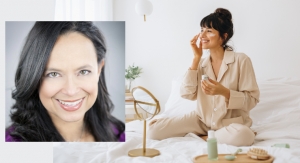09.01.18
In the second quarter of 2018, sales of U.S. prestige beauty products reached $4.3 billion, a 6% increase over Q2 2017.
Prestige makeup sales remained flat over Q2 2017 (Q2 2018: $1.9 billion), with face makeup the best-performing segment of the market driven by dollar gains in concealer, and smaller subsegments including powder and tinted moisturizer. A reversal of trend, lip gloss sales grew by 10% in Q2 2018 (compared to a double-digit decline in Q2 2017), and lip color sales were down by 10% (compared to flat Q2 performance last year). Eye shadow sales were down, while sales of eye brow makeup, mascara, and false eyelashes grew, though at a slower clip compared to last year.
“Despite the slowdown in makeup’s performance, NPD’s 2018 Makeup Consumer Report shows that more women are wearing makeup today than two years ago, indicating that the makeup category remains highly impacted by the increasing fragmentation of the market and the continued rise of digitally native brands,” said Larissa Jensen, executive director and beauty industry analyst, The NPD Group—and a member of Beauty Packaging’s Board of Advisors.
Prestige skincare growth continued to outpace makeup, with sets and kits, facial moisturizers, age specialists, and sunscreen among the facets of the market contributing the most dollars gained in the skincare category in Q2 2018 ($1.3 billion).
“In skincare, this year we are seeing greater success coming from existing products than from newness. But the biggest driver remains the consumer interest in wellness, clean ingredients, and natural brands. These market trends continue to fuel the category and motivate both retailers and consumers across the brick and mortar and online channels,” said Jensen.
Fragrance juice sales grew by 10%, an increase of 8 percentage points over Q2 2017 (Q2 2018: $910.8 million), while sales of home scents grew by 11%.
“Fragrance continues to be buoyed by its success during key holiday selling periods. Specifically for Q2, Mother’s Day and Father’s Day both experienced a surge in sales in the three weeks leading up to each holiday, growing by 8% and 9%, respectively, during those times,” said Jensen.
Hair, beauty’s smallest category, is also its fastest-growing, with sales increases across all aspects of the market including hair care, color, sets, and styling (Q2 2018: $178.4 million).
“I expect hair will remain the strongest performing beauty category this year as salon-based brands continue their expansion into the prestige market,” said Jensen.
Prestige makeup sales remained flat over Q2 2017 (Q2 2018: $1.9 billion), with face makeup the best-performing segment of the market driven by dollar gains in concealer, and smaller subsegments including powder and tinted moisturizer. A reversal of trend, lip gloss sales grew by 10% in Q2 2018 (compared to a double-digit decline in Q2 2017), and lip color sales were down by 10% (compared to flat Q2 performance last year). Eye shadow sales were down, while sales of eye brow makeup, mascara, and false eyelashes grew, though at a slower clip compared to last year.
“Despite the slowdown in makeup’s performance, NPD’s 2018 Makeup Consumer Report shows that more women are wearing makeup today than two years ago, indicating that the makeup category remains highly impacted by the increasing fragmentation of the market and the continued rise of digitally native brands,” said Larissa Jensen, executive director and beauty industry analyst, The NPD Group—and a member of Beauty Packaging’s Board of Advisors.
Prestige skincare growth continued to outpace makeup, with sets and kits, facial moisturizers, age specialists, and sunscreen among the facets of the market contributing the most dollars gained in the skincare category in Q2 2018 ($1.3 billion).
“In skincare, this year we are seeing greater success coming from existing products than from newness. But the biggest driver remains the consumer interest in wellness, clean ingredients, and natural brands. These market trends continue to fuel the category and motivate both retailers and consumers across the brick and mortar and online channels,” said Jensen.
Fragrance juice sales grew by 10%, an increase of 8 percentage points over Q2 2017 (Q2 2018: $910.8 million), while sales of home scents grew by 11%.
“Fragrance continues to be buoyed by its success during key holiday selling periods. Specifically for Q2, Mother’s Day and Father’s Day both experienced a surge in sales in the three weeks leading up to each holiday, growing by 8% and 9%, respectively, during those times,” said Jensen.
Hair, beauty’s smallest category, is also its fastest-growing, with sales increases across all aspects of the market including hair care, color, sets, and styling (Q2 2018: $178.4 million).
“I expect hair will remain the strongest performing beauty category this year as salon-based brands continue their expansion into the prestige market,” said Jensen.




























